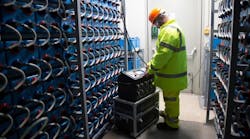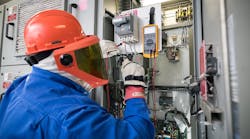Selecting the right DMM for your needs is only part of what’s needed to ensure you are taking measurements accurately and safely. Your DMM leads are an important component, too. But those DMM leads actually are kind of fragile.
The good news is DMM leads are relatively inexpensive, so if you see or suspect your leads are damaged, you can replace them easily. If you are going out on a job that’s fairly remote, bring a few sets of spare test leads with you (preferably in a box or protective pouch).
It takes only a minute to visually inspect your leads before the first use of the day. (Be sure to examine the connector shrouds and/or finger guards while doing this.) If the leads don’t appear damaged, great. Your next step is to plug them into the meter, short them together, and use the Ohms function to test for continuity.
Although you always want to replace (not attempt to repair) any test leads that are suspected of being (or known to be) bad, follow these tips to avoid simply wasting money:
• Never bend test leads sharply.
• Don’t hang or support a meter by the leads that are plugged into it.
• When done with leads, unplug them from the meter rather than wrap them around it. Store in a suitable pouch or box.
• If the leads have clips, open each clip rather than tug on the lead to remove it.
• If the leads are dirty, gently wipe with a damp cloth; then with a dry one. Don’t use cleaning compounds to remove grime. The compounds may damage the insulation or leave a conductive residue on the leads.
• Keep leads off the floor, so that people don’t step on them. If a lead is stepped on, replace the set.
• Don’t put them in your back pants pocket.



